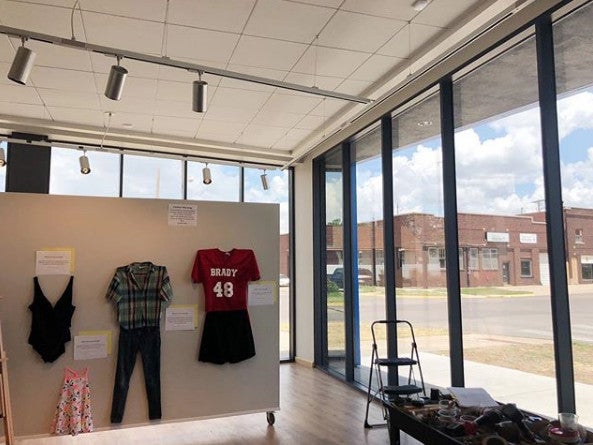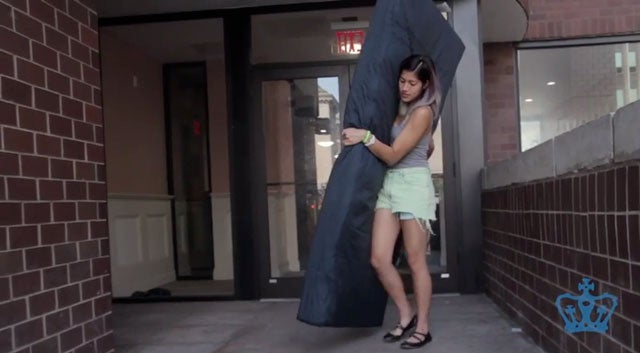
This essay was composed for our Art Writing Incubator (formerly, Art Writers Mentorship), focusing on cultural reporting and art criticism that position the arts within broader cultural and social contexts. Susan Snodgrass, a longtime senior lecturer in the New Arts Journalism program at the School of the Art Institute of Chicago, assigned participants to write essays that address current issues of concern to their local art communities or beyond.
In the last year, the #MeToo movement, a phrase coined by civil rights activist Tarana Burke and popularized by actress Alyssa Milano, has taken ahold of American society, dominating headlines and social media feeds, reshaping workplace behavior, and forcing our culture to take a long, hard look at what we deem as acceptable behavior. The movement was even named Time magazine’s Person of the Year in 2017. Before the hashtag gained momentum last fall, particularly with the allegations against film producer Harvey Weinstein, artists and writers were already speaking up about their experiences and calling out offenders. Artists have been fighting back against the general acceptance of sexual assault and getting coverage from major media outlets like The New York Times. Often, those who are comfortable with our patriarchal society, tell us “it happens” and that there is nothing we can do about it. Men and women shrug at reports of people who are being assaulted every day. Their solution? Dress more appropriately if you don’t like being catcalled, groped, or worse.
Young artists have called out this ridiculous assertion by organizing such exhibitions as “What were you wearing?” at the University of Florida in April 2018, which featured clothing worn by women at the time of their assault accompanied by statements from the anonymous stories. One note read, “I was wearing overalls and my favorite T-shirt. I went inside with them because it was summer and I was hot, and they said they had lemonade. I never wore overalls again,” (CNN, April 16 2018).

The University of Kansas and the University of Arkansas have also presented their own versions of “What were you wearing?” in their on-campus art galleries. The clothing, hanging limp and defeated, ranged from pajamas to bathing suits to oversized sports jerseys. The men and women wearing these outfits were not “asking for it. The clothing demonstrates the variety of circumstances of assault, acknowledging that it is never the fault of the victim. They were not necessarily displaying cleavage or tight leggings to show off their bodies, and even if they had, a wardrobe choice is not an invitation to assault.
Perhaps due to the many incidents of sexual assault on college campuses, universities seem to be the only institutions tackling these controversial topics. These movements are growing by taking to the streets and to the schools to be heard. Students and young people are gaining strength through social media and connecting to others with similar stories. Previously, victims of sexual assault were ashamed to come forward and accuse their attacker, often going it alone and without any support. If they spoke up, they risked being labeled a liar or consensual partner. While this is still a reality today, social media has given victims another place where they can speak about their experiences.
In Atlanta in 2016, artist and sexual assault survivor Jessica Caldas set a timer to go off every 107 seconds and marked an X on the BeltLine, demonstrating the frequency of sexual abuse (GPB News, August 23, 2016). Caldas earned a few articles for her artwork, but she gained most of her audience from walkers and joggers passing by on the BeltLine. According to her website, in April of 2015 and 2016, during Sexual Assault Awareness Month, Caldas carried a bag of chalk with her everywhere she went. She marked an X when she was in a public space and documented her journey on social media. Some people joined her and took the chalk to create their own marks. According to an interview with BURNAWAY in 2016, Caldas chose to title her project “#every107seconds,” taking advantage of the rise of the hashtag. She says, “The hashtag is part of the name, because although it’s a physical, social practice piece, it also occurs primarily through social media, and that’s how a lot of people follow it or get access to it.”

Sexual assault and its relationship to the feminine body is being recognized in poetry as well as in art exhibitions and street art. Rupi Kaur, a 25-year-old Indian-Canadian poet, has published two best-selling books of poetry: Milk and Honey (2014) and The Sun and Her Flowers (2017). In both books, she writes about the objectification of women and their bodies, and illustrates experiences of rape and assault. She even tackles masturbation and the pleasures of sex, encouraging women to embrace their bodies and their abilities. In Milk and Honey, Kaur writes:
sex takes the consent of two
if one person is lying there not doing anything
cause they are not ready
or not in the mood
or simply don’t want to
yet the other is having sex
with their body it’s not love
it is rape
Kaur’s text has been retweeted and reposted continuously since Milk and Honey’s publication. Many of Kaur’s poems also focus on empowering women and encouraging them to embrace their bodies and their feminine strengths. She writes:
the next time he
points out the
hair on your legs is
growing back remind
that boy your body
is not his home
he is a guest
warn him to
never outstep
his welcome
again
In May 2015, before the #MeToo movement took off, Emma Sulkowicz, an art student at Columbia University, protested her own sexual assault and the university’s inaction by carrying a mattress around campus until her rapist was expelled. In Mattress Performance (Carry That Weight). Sulkowicz carried her mattress in a form of protest art, making an artistic statement while also demanding the administration’s attention much like protest art of the Vietnam era. Partly because of her actions, the Title IX law that prohibits gender-based discrimination on college campuses has undergone many changes and investigations.

In the dance world, sexual assault is common yet hard to define because of the physical nature of the art. Starting at the age of four, I donned leotard and tights, and eventually bikini costumes and sparkling booty-shorts for my competitive performances. My body was always on display, and under the watchful eye of our instructors and the blinding lights on stage. My fellow dancers and I were painfully aware of this fact. My teachers touched me daily—but not sexually. A pat on the thigh meant turn out, a stroke on my stomach meant pull in my ribs. I personally never had a problem with it, but if I had, I would not have felt comfortable speaking up. It was simply part of dance. We use the wall-to-wall mirrors to watch our bodies and correct our movements, and our teachers only squeezed the underside of our butts to show us where we needed to tighten. Although I do not think that dance in itself contributes to sexual assault, the environment can sometimes encourage it.
There is a power dynamic—an extreme hierarchy—that also contributes to this culture, especially in the ballet world. Artistic directors, usually middle-aged men, have complete control over dancers’ careers. A dancing career is short; most of the company members are young and often fresh out of high school. Many dancers may not speak up because they know that their career could be jeopardized. The dance community is strangely small, and you never want to burn bridges. If you accuse someone in power of assault, you could be labeled as dramatic, a trouble-maker, and there are countless other dancers waiting to take your place.

Last month, Dance Magazine published an article titled “#DancersToo: Is the Dance World Ready to Address Sexual Harassment?” The piece reminded us of the anonymous letter accusing longtime New York City Ballet leader Peter Martins of sexual assault, which led to his resignation on January 1, 2018, amid an ongoing investigation, which, unable to corroborate the allegations of harassment and abuse, concluded in February, 2018 (NY Times, February 15, 2018).

American Ballet Theatre dancer Marcelo Gomes also resigned suddenly in December after accusations about him surfaced. Although these two cases gained national attention, they are certainly nowhere near the only occurrences of sexual harassment. The article asserts that dance culture encourages artists to stay quiet and listen to whatever their teacher says. In an office environment, touching can be strictly prohibited, but in a dance studio, it may be necessary to correct a dancer or emphasize a movement. Many yoga and Pilates instructors often begin their classes by asking if anyone would prefer not to be touched, a model the dance world could follow. At the heart of it all is education. Dancers need to speak up and seek support from leadership who have the power to educate employees and artists through workshops on harassment and prevention.
Through the #MeToo movement, women have found an outlet of support by sharing stories of verbal, emotional and sexual abuse. It is impossible to compare one assault to another, or summarize a traumatic experience in one hashtag. But #MeToo got people talking, and it has started many necessary conversations.




